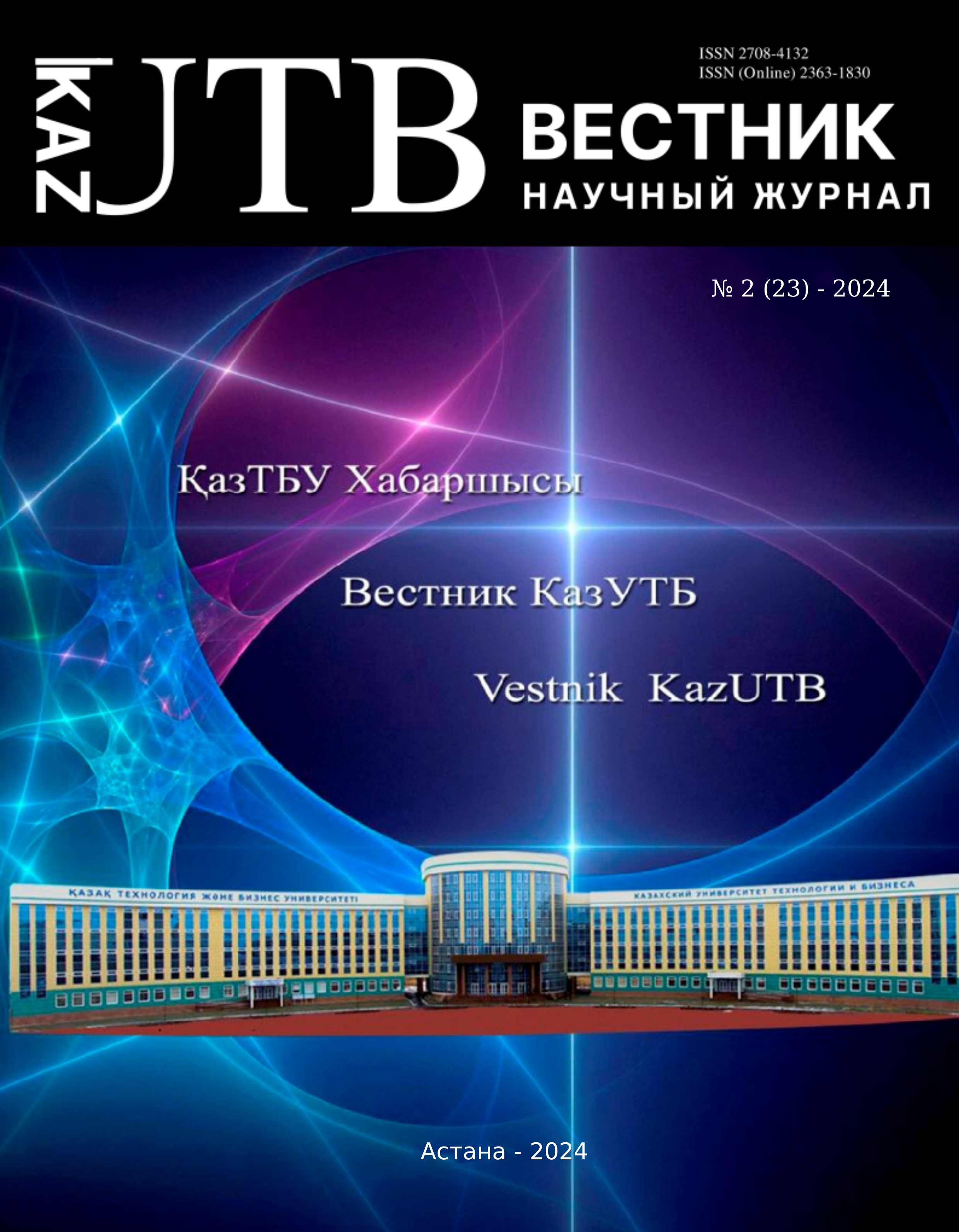Меню


Information and communication and chemical technologies
No. 2 (23) - 2024 / 2024-06-30 / Number of views: 131
IR SPECTROSCOPIC AND QUANTUM-CHEMICAL STUDY OF COMPOUNDS OF AMIDES AND THIOAMIDES WITH HOLARIC AND HEXAFLUOROSILIC ACIDS AND COPPER (II) SALTS
Authors
Keywords
coordination compounds, amides, quantum chemical characteristics, IR spectroscopy, protonation, mixed-ligand complex
Link to DOI:
How to quote
Kusepova Л. ., and Suyndikova Ф. . “IR SPECTROSCOPIC AND QUANTUM-CHEMICAL STUDY OF COMPOUNDS OF AMIDES AND THIOAMIDES WITH HOLARIC AND HEXAFLUOROSILIC ACIDS AND COPPER (II) SALTS”. Vestnik KazUTB, vol. 2, no. 23, June 2024, doi:10.58805/kazutb.v.2.23-434.
Abstract
The synthesis of new coordination compounds based on d-metal salts with protonated amides and thioamides, along with the study of their structure, physicochemical properties, formation patterns, and identification, poses a challenging task in modern chemistry. This article examines the quantum chemical and IR spectroscopic characteristics of compounds of amides and thioamides with hydrochloric and hexafluorosilicic acids and copper (II) salts. Metal ions form a coordination bond with the oxygen of the unprotonated urea molecule, and in its absence, with the nitrogen atom of the amino group, as confirmed by quantum chemical calculations.Using the quantum chemical method with the PM3 program, interatomic distances, bond angles, charges, and coordinates of the atoms of the resulting coordination compound were calculated. Energetically and geometrically more favorable for copper (II) complexes is the formation of a distorted octahedral structure, the ligands of which are urea, protonated urea and acid anions. Based on the IR spectra of amido complexes, the protonation of amides at the oxygen (sulfur) atom of the carbonyl group of the amide (thioamide) has been demonstrated. In addition, in thioamide compounds, S-protonation is favored by a shift to the high-frequency region of the absorption band of stretching vibrations of C-N bonds.
Copper (II) coordination compounds contain both urea and protonated urea molecules in the inner sphere, the former being connected to the complexing agent through the oxygen atom of the carbonyl group, and the latter through the nitrogen atom of the amide group. The experimental data obtained and the established patterns of acid-base interaction of the components provide the theoretical basis for the chemistry of amido complexes, serving as reference material in the field of coordination compound chemistry.



